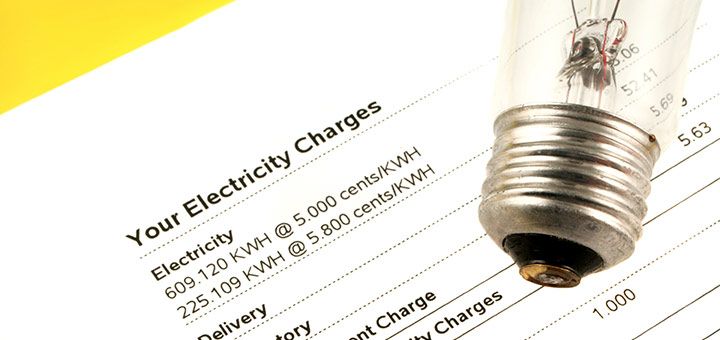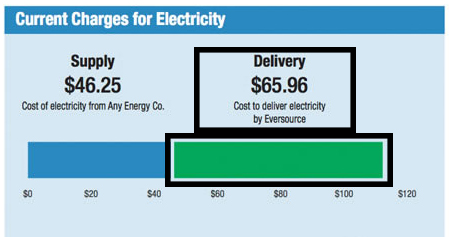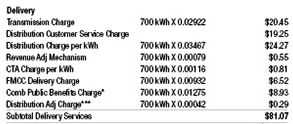The browser you are using is not supported. Please consider using a modern browser.

Do you know what you are paying for? A breakdown of your electricity bill

For most of us, an electricity bill comes from our utility each month and we pay the balance without thinking twice about it. But, if you think you are just paying for the electricity you used that month – think again.
There are many state mandates, government policies, and utility programs and projects that are baked into your total charge. By understanding these charges, you can get a better picture of what you are paying for.
First, lets breakdown the different charges. For many Americans, this is broken down into a supply and delivery charge.
Electricity Supply Charge

The supply portion is composed of a couple different charges. First and foremost, it is the total amount of electricity you use multiplied by your supply rate.
Your supply rate comes from either;
- Your utility (default)
- A retail electricity supplier
Many people are unaware that if you live in a deregulated electricity state, you can shop this supply rate and switch off your utility to a lower 3rd party provider. This can save you instantly on this portion of your bill without changing any of your energy habits.
Another charge that goes into the supply portion is renewable energy credits that are mandated by state governments programs. Many states require that a certain percentage of electricity must come from renewable energy. Electricity providers must purchase renewable energy credits from generators and a portion that cost gets passed down to the customer.
There are also regional greenhouse gas initiatives that get baked into the supply rate. This is where electricity suppliers must purchase allowances for greenhouse gases they emit. The revenue from these initiatives are put into government energy efficiency programs.
For example, Massachusetts collected over $600 million from the sale of allowances from 2008-2018.
Electricity Delivery Charge

The delivery charge is a “catch all” category for getting the electricity from the power plant to your home. The primary charge is for transmission and maintenance of the electrical grid (power lines) but there are policies that are also baked in.
Energy efficiency programs, renewable energy charges, and distributed solar charges are just some of the most popular charges baked into the delivery charge. These are policies put into effect by the utility that get passed down to all ratepayers.

One of the most controversial is remuneration charges. This is a charge for carrying renewable energy projects on there books. The problem that most have with this charge is that there is very little risk for utilities to have these projects on their books because their customers pay for these projects.
For example, the offshore wind farm project in Massachusetts will net the utilities $168 million over 20 years. Customers of Eversouce Energy, National Grid, and Unitil will pay for this in their delivery charge.
So, what are you paying for?
Roughly ⅕ of the average US electricity bill are charges for something other than the electricity you are using. For the average American electricity consumer, that is around $18.33 each month, or about $220 per year.
All states and utilities have different laws and programs so it is best to take a look at your own electricity bill to see exactly what you are paying for. It may surprise you how much of your electricity bill is for something other than the electricity you are using.
